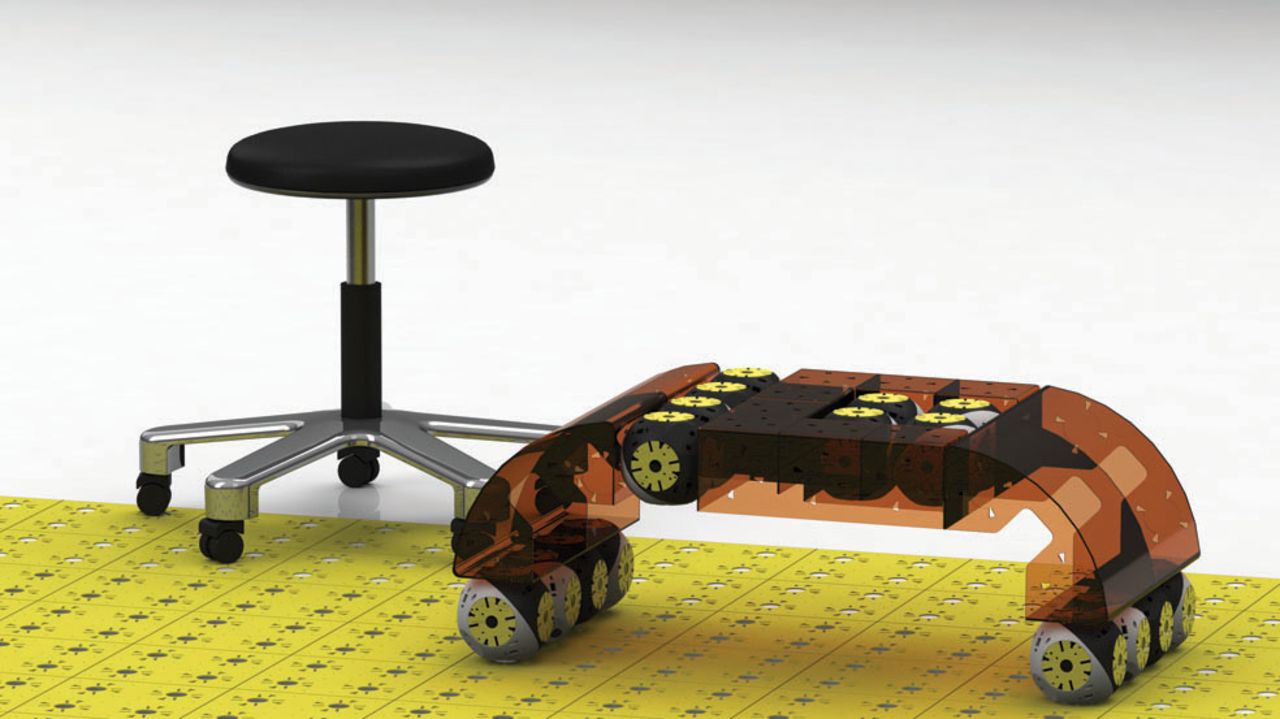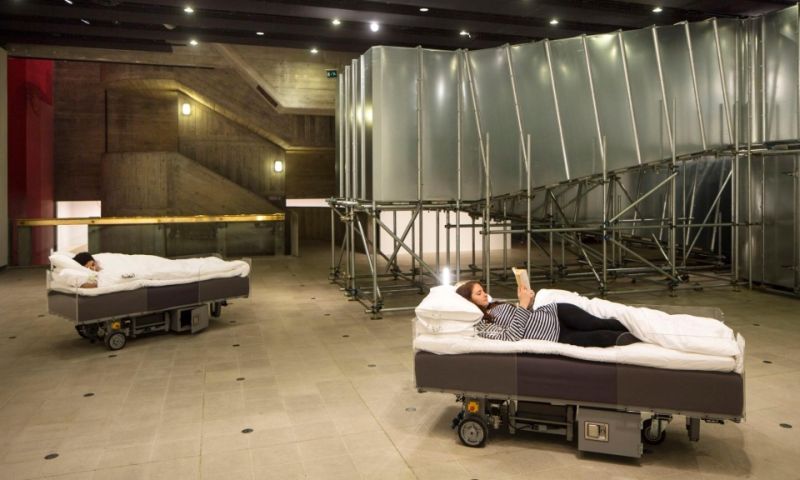Introduction
Imagine walking into a room where your surroundings instantly adapt to your presence. A partition glides aside as you enter. A chair rolls toward you intuitively. A bookshelf reshapes itself with a wave of your hand. This futuristic scenario is now becoming reality through gesture-based robotic furniture and adaptive spatial systems, combining human-robot interaction with architectural innovation.
These technologies are not only transforming how we furnish our homes and offices but also how we interact with them—offering intuitive, flexible, and space-efficient solutions for modern living.
The Emergence of Gesture-Controlled Environments
Gesture control has evolved as the next frontier in smart automation, extending far beyond voice assistants and mobile apps. These systems offer seamless and intuitive interaction, especially in environments where touchless controls are preferred.
Notable Examples:
MIT’s Media Lab – CityHome Project: A modular system where walls, beds, and tables respond to gestures and voice commands, transforming a single room into multiple environments.
Ori Living: Developed at MIT and designed by Yves Béhar, Ori’s robotic furniture responds to simple hand gestures, optimizing micro-living by sliding out beds, closets, or workspaces.
Freethink’s “Robot Rooms”: Envisioning spaces where even ceilings and walls are robotic, dynamically transforming rooms through responsive architecture.
These innovations collectively define architectural robotics—the fusion of built environments and robotics to enhance adaptability and usability.
Ori Robotic Furniture/Image source: coolthings.com
Classifying Robotic Gestures in Furniture
Research in human-robot interaction (HRI) has identified three primary gesture types used in robotic furniture:
Deictic Gestures
Directional cues that act like pointing—robots indicate where users should go or what to engage with.
Emblematic Gestures
Culturally recognized motions that communicate explicit commands—such as raising a hand to pause movement.
Architectonic Gestures
Unique to spatial robotics, these involve structural changes in furniture itself—like a shelf rotating or a divider shifting to signal a new room mode (e.g., “privacy”).
These gestures enhance non-verbal communication between humans and robotic systems, making interactions intuitive and emotionally resonant.

Image source: CNN
Key Projects and Innovations
Ori Robotic Furniture
Uses gesture control and mobile apps to transform small living spaces. A tap or swipe moves beds, closets, and desks into or out of view.
CityHome by MIT
Modular robotic units transform a 200-square-foot studio into a functional kitchen, bedroom, or office—activated by hand gestures.
ChairBots and Expressive Robotics
Experimental chairs that signal emotions or commands like “follow me” through smooth, human-like movements.
Roombots Modular Furniture
Developed by EPFL, these robotic modules can self-assemble into various furniture types like tables and benches using swarm robotics.
Gesture Recognition Technology
To ensure fluid interaction, accurate gesture recognition systems are critical.
DiG-Net Deep Learning
A state-of-the-art neural network capable of recognizing hand gestures from over 30 meters away. Ideal for contactless control in smart homes and healthcare.
Depth-Sensing Cameras
Tools like Microsoft Kinect and Intel RealSense have paved the way for capturing human motion in 3D, enabling real-time gesture-based inputs.
These tools empower furniture to interpret actions such as waving, pointing, or posture shifts—making human interaction both responsive and context-aware.

Image source: core77.com
Real-World Applications
Urban Micro-Living
Gesture-based furniture maximizes utility in small apartments, transforming areas for different uses—daybed to workspace, living room to bedroom.
Accessible Design & Aging in Place
Gesture-controlled systems provide elderly or differently-abled individuals with a dignified way to interact with their environment—chairs that assist in standing, tables that reposition for convenience.
Corporate and Co-Working Environments
Meeting spaces can morph between collaboration hubs and private focus rooms based on simple hand gestures, enabling dynamic team configurations.
Immersive Digital Experiences
Projects like RoomShift combine gesture-responsive furniture with VR, creating haptic and interactive environments that respond to both virtual and physical stimuli.
Image source: design-milk.com
Design Challenges & Ethical Considerations
Despite its promise, robotic furniture presents unique challenges:
- Understandability vs. Intrusiveness: Overly expressive gestures can be distracting; too subtle, and users may not interpret them.
- Safety and Predictability: Furniture must move slowly and predictably to avoid startling or injuring users.
- Standardization Issues: With no global gesture vocabulary, systems may behave inconsistently across brands or regions.
- Privacy Concerns: Gesture and motion tracking could potentially record sensitive behavior if not secured.
Designers must balance functionality with cultural nuance and personal comfort.
Future Trajectories
Key directions shaping this field include:
Standardized Gesture Taxonomy: Universal design language across systems.
Multimodal Sensors: Combining vision, sound, and touch for robust context awareness.
Personalized Learning Algorithms: AI-driven adaptation to individual behavior patterns over time.
Emotional Interaction Models: Creating empathetic systems that interpret mood and comfort levels based on movement.
Ultimately, robotic environments will not only respond to our gestures but anticipate our intentions—redefining how we co-exist with architecture.
Conclusion: Environments That Think with You
From Ori’s space-saving apartments to expressive ChairBots and modular Roombots, gesture-based robotic furniture is changing the very idea of spatial design. These systems blend technological intelligence with emotional awareness, offering spaces that respond, support, and evolve with their users.
As gesture recognition becomes more sophisticated and robotic design more human-centric, the line between object and collaborator will blur—turning furniture into living partners in our environments.
References:
(PDF) Roombots–modular robots for adaptive furniture
The Application of Modular Robotics in Adaptive Architecture – Robotics Meta
For more content like this CLICK HERE





